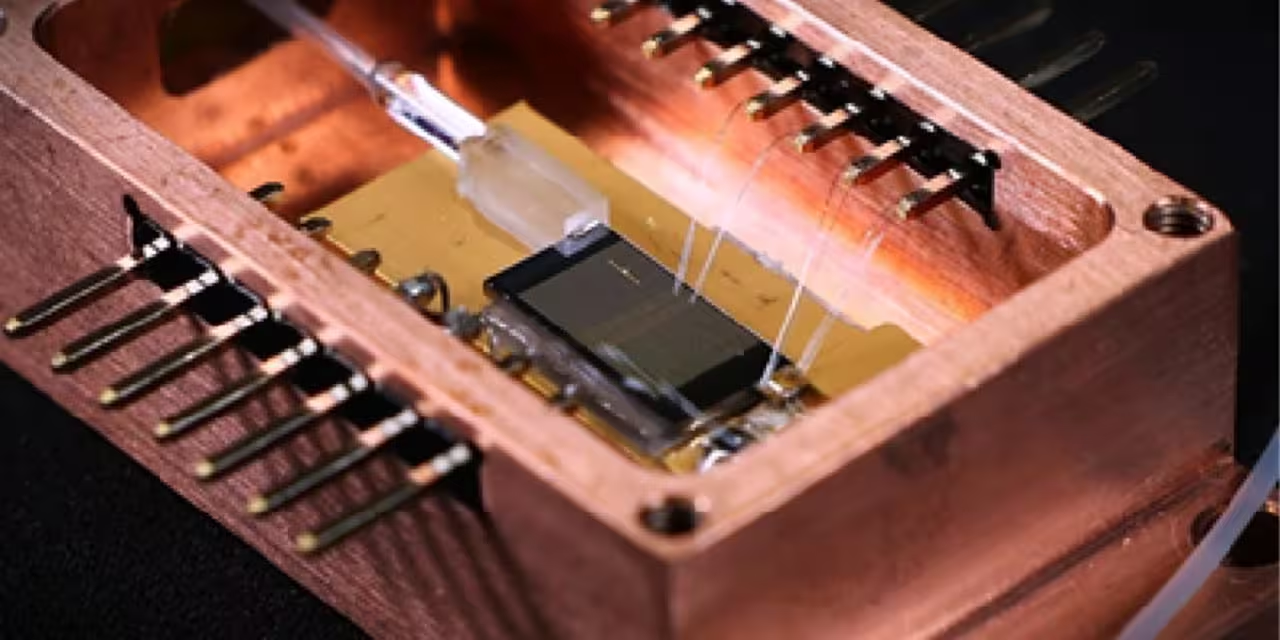3 Minutes
Researchers have built a powerful, tunable laser small enough to sit on a microchip. This compact device promises faster, cheaper, and simpler precision light sources for applications ranging from autonomous-vehicle Lidar to atmospheric gas sensing.
A microchip laser that packs surprising power
Laser systems used for high-precision sensing and communications are typically bulky, expensive, and tricky to operate. A multidisciplinary team led by Associate Professor Johann Riemensberger at the Norwegian University of Science and Technology (NTNU), together with EPFL and Luxtelligence SA, reports a new chip-scale laser that overcomes many of these practical limits. Published in Nature Photonics, the work demonstrates a stable, high-power beam produced by miniature photonic circuits and advanced materials integrated on standard chip platforms.
How the device works and what makes it different
At the heart of the innovation is a blend of engineered materials and microscopic light-guiding circuits. The team designed a system that produces a continuous, stable optical output that can be tuned smoothly across frequencies without sudden jumps. That tunability simplifies control: instead of juggling multiple knobs, users can steer the laser with a single control parameter. Because fabrication uses existing semiconductor techniques, the laser can be scaled up in production and offered at lower cost than many current precision lasers.

Key technical advantages
- Chip-scale integration for compact form factors
- Smooth, fast frequency tuning without mode hops
- High beam stability and measurable power suitable for sensing
- Compatibility with standard manufacturing for mass production
Why this matters: from Lidar to gas detection
Imagine a Lidar sensor in a self-driving car that is smaller, cheaper, and easier to calibrate. The new chip laser can measure distances with centimeter-level precision by timing returning light pulses or detecting tiny phase shifts in reflected waves. In laboratory evaluations it reached accuracy on the order of about four centimeters — promising for automotive and robotics range-finding.
The team also tested the device for gas sensing, using hydrogen cyanide as a demonstration target. Hydrogen cyanide (also called hydrocyanic acid) is a highly toxic trace gas for which rapid, sensitive detection is essential. The laser’s tunability and spectral purity make it well suited for absorption-based detectors that identify specific molecular fingerprints in the atmosphere.
Implications and next steps
By shrinking powerful, tunable lasers onto a chip, the researchers open pathways to affordable, field-deployable instruments for environmental monitoring, industrial safety, and communication hardware. Riemensberger notes that the combination of performance and manufacturability could enable “small, inexpensive, and user-friendly measuring instruments and communication tools with high performance.”
Future work will focus on improving long-term stability, integrating the laser with detectors and electronics on the same platform, and validating performance in real-world Lidar and gas monitoring systems. If those steps succeed, this chip-scale photonics approach could accelerate adoption of precision optical sensing across many industries.
Source: scitechdaily


Leave a Comment